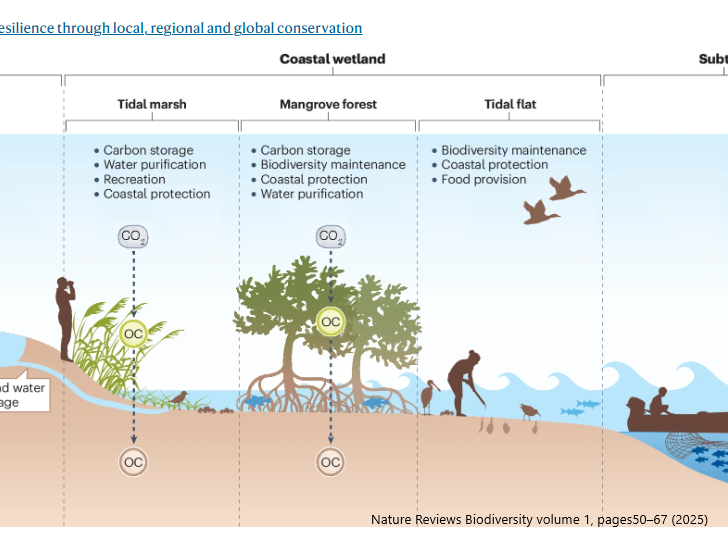
Coastal wetlands, including tidal marshes, mangrove forests and tidal flats, support the livelihoods of millions of people. Understanding the resilience of coastal wetlands to the increasing number and intensity of anthropogenic threats (such as habitat conversion, pollution, fishing and climate change) can inform what conservation actions will be effective. In this Review, we synthesize anthropogenic threats to coastal wetlands and their resilience through the lens of scale. Over decades and centuries, anthropogenic threats have unfolded across local, regional and global scales, reducing both the extent and quality of coastal wetlands. The resilience of existing coastal wetlands is driven by their quality, which is modulated by both physical conditions (such as sediment supply) and ecological conditions (such as species interactions operating from local through to global scales). Protection and restoration efforts, however, are often localized and focus on the extent of coastal wetlands. The future of coastal wetlands will depend on an improved understanding of their resilience, and on society’s actions to enhance both their extent and quality across different scales.












